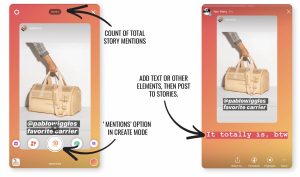
Over the last few years, we’ve seen a seismic shift in the way brands think about and leverage visual content across different channels. While the digital web created new and exciting environments for content to live, social media has forever changed the way content is created and shared. And of course, mobile devices have made all this content—billions of beautiful images shared every day—available anytime, anywhere. According to the GSM Association’s 2015 Mobile Economy Report, half of the world’s population has a mobile subscription – up from one in five just a decade ago.
Needless to say, the buyer’s journey has changed. Whether checking out images on Instagram or finding inspiration from a blog, ongoing access to snackable content has resulted in more opportunities for people to consume images and discover products than ever before. Consequently, visual commerce—the emerging need to understand how images engage and convert consumers at every point of the purchase funnel—has become a prominent topic among marketers and brands. Sound familiar? Congratulations. You’re among the 77% of marketers who agree there is a growing amount of pressure to connect visual content to ROI.

The proliferation of visual content presents a huge monetization opportunity for businesses, but there’s a lot to consider when vetting the technologies that will enable your team to do so – and to do it well. To help you think through some of the key questions you should be asking, I teamed up with Olivia Herron, Vice President of Account Management at Curalate.

I hope you find her suggestions valuable. And of course, don’t hesitate to leave your own questions and suggestions in the comments below.
1. Why should I invest in a visual commerce platform … and what value will your technology add to my business?
So here’s the thing. Most marketers (especially those focused on digital marketing) would love nothing more than to find a one-size-fits-all solution that fulfills every content marketing need – a platform that deals with both text and images. I get it. Simplicity is attractive. It’s core to building and managing a streamlined marketing team.
But the bottom line is that this is unrealistic. The way brands collect, analyze, distribute and measure visual content is fundamentally different than the way you approach text. Why? What it comes down to is context. While text is full of it (context, that is), images—which are frequently shared without metadata—aren’t. As a result, it becomes difficult to wrangle all of the images that are being shared about your products, and nearly impossible to connect that visual content to commerce. Without that context, consumers are left wondering, “What product is this?” “Who makes it?” “Where can I buy it?” and “How much does it cost?”

So, in short, the right visual commerce platform should help you to:
- Find all of the images about your products;
- Easily add context to those images, and;
- Monetize visual content throughout the purchase funnel and on the channels that matter to your brand.
2. What types of images will I be able to find and share?

Over the last couple of years, we’ve seen user-generated content (UGC) bubble to the surface in a really important way. That marketers are willing to weave fan photos into the fabric of their own stories suggests a major change in the dynamic between consumers and brands. As a marketer, this is exciting stuff.
While UGC is a valuable source of creative—after all, these images are authentic, interesting, and offer unique perspectives—fan-sourced images are just a piece of the puzzle.
If you use a visual commerce platform that focuses on one type of image, you ultimately risk missing the bigger picture.
The smartest brands are building content libraries filled with images from a wide variety of contributors.
Consider the following:
- Your influencers
- Your stock photos
- Your catalogs and web imagery
- Your employees and store associates
- Your retail partners
- Your ad units
- Publishers and bloggers
- Creative partners and vendors
Leveraging all of these different sources not only allows you to grow your content library, giving you more content to select from, but it also gives you the opportunity to influence the type of images your customers share. Every time you post a quality user image, you’re sending a signal to other consumers – these are the types of photos that match our brand voice and aesthetic. This will in turn pay dividends by helping your customers create better content, ensuring your brand is ideally represented on channels like Instagram.
3. How will your platform help me prove ROI?
Vanity metrics such as impressions and ‘likes’ are no longer adequate measures of success.

As marketers are pressured to demonstrate how visual content drives business results, you’ll need to invest in technology that measures how images—both brand-owned and crowdsourced—improve traffic, drive digital engagement and generate revenue.
Why? Because images don’t just shape the way people experience and perceive your products. It runs much deeper:
Images influence what people buy, driving clicks and in many cases conversions.
At Curalate, our clients prove this every day. Take eComm retailer Moorea Seal, for instance. By simply connecting Instagram images to products and relevant content, the brand was able to turn Instagram into a top revenue driver.

That’s the power of visual content. Beautiful lifestyle images spark desire, and by guiding consumers from pictures to products, you can seamlessly go from awareness to revenue.
In addition, understanding which product photos are generating the most engagement, traffic and revenue can allow you to optimize images across your other marketing touchpoints. This goes beyond social. For instance:
Get way more out of your top images
If you know an image is generating a ton of referral traffic on Instagram, or that a certain product photo is trending on Pinterest, you should be showcasing it throughout other materials. Featuring this content in emails, ad units, blogs, etc. can be an incredibly efficient way to derive additional value from a single image.
Build a team of influential contributors
It’s not just about your top images either. It’s about the people behind the lens, too. Consider which bloggers, customers, store associates and influencers are driving the most revenue for your brand to create an ongoing stream of compelling images shared by all-star contributors.
4. Where do you see the industry going?

This may sound obvious, but I can’t stress this enough. Invest in innovation. You don’t want a provider who’s always playing catch-up; you want a partner who understands the challenges digital marketers are facing and who innovates and implements ahead of your brand’s needs.
How can you do this? By paying close attention to the rate of creation, innovation and implementation of new solutions and features. When selecting a visual commerce provider, zero in on true thought-leaders.
Digital & Social Articles on Business 2 Community
Find teams that are building the new world of marketing, not merely adapting to it.
(65)







